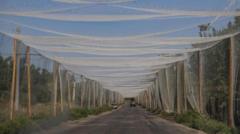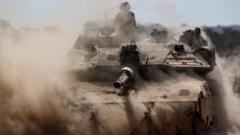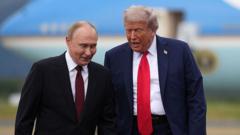As Russia seeks to consolidate its territorial gains in Donetsk, the region remains essential for Ukraine's defensive strategies and economic stability. This article explores the military, economic, and geopolitical implications of control over Donetsk.
The Strategic Significance of Donetsk in Ukraine's Defense Framework

The Strategic Significance of Donetsk in Ukraine's Defense Framework
Understanding why Donetsk is pivotal for Ukraine amidst ongoing conflict with Russia.
The ongoing conflict in Ukraine has brought renewed attention to the Donetsk region, where control is not just about territory, but about the future of Ukrainian defenses and national integrity. Recently, discussions at an international summit highlighted Russian President Vladimir Putin's desire to solidify his grip on the region by freezing the war along the current front lines. Currently, Russia has captured roughly 70% of Donetsk, including its capital, following years of intense fighting that have left the area battered and divided.
For Ukraine, conceding western Donetsk would result in the loss of vital land and potentially create a new wave of displaced persons, drastically weakening its capability to counter any future Russian offensives. The region's military significance is underscored by its existing defensive structures and geographical advantages.
Despite the devastation inflicted by the conflicts, Ukrainian forces still maintain control over approximately 6,600 square kilometers (nearly 2,548 square miles) of Donetsk where around 250,000 residents remain. Key towns in this area—such as Kramatorsk, Slovyansk, and Kostyantynivka—play crucial roles in Ukraine’s broader industrial landscape known as the Donbas, though this economy has been severely impacted by the violence. Dr. Marnie Howlett, a lecturer at the University of Oxford, points out the long-term challenges to accessing these resources due to destruction and land mines.
The military implications of controlling Donetsk are elaborated in a report by the Institute for the Study of War, which describes a "fortress belt" running through western Donetsk. This fortified zone is a product of over a decade's worth of investment in defense strategies, creating trenches, bunkers, and other barriers to fend off Russian advances. Experts note that the geographical layout of the terrain poses challenges to Ukraine's defensive capabilities, especially as Russian forces intensify their assault.
The broader context reveals that while control of Donetsk is crucial, both Ukrainian and Russian forces face logistical challenges in maintaining or advancing existing front lines across the protracted 1,100km conflict span. Discussions around a potential peace deal show the complexity of providing Ukraine the time and resources needed to establish new defensive lines should they concede any territory.
As the fight continues, President Volodymyr Zelensky has remained firm against any compromise that would involve ceding Donbas in exchange for peace, emphasizing its strategic value in repelling future threats from Russia. As military and civilian infrastructure in Donetsk remains in ruins, the question of whether Ukraine can sustain its defenses in this critical region looms large in the ongoing conflict narrative.


















